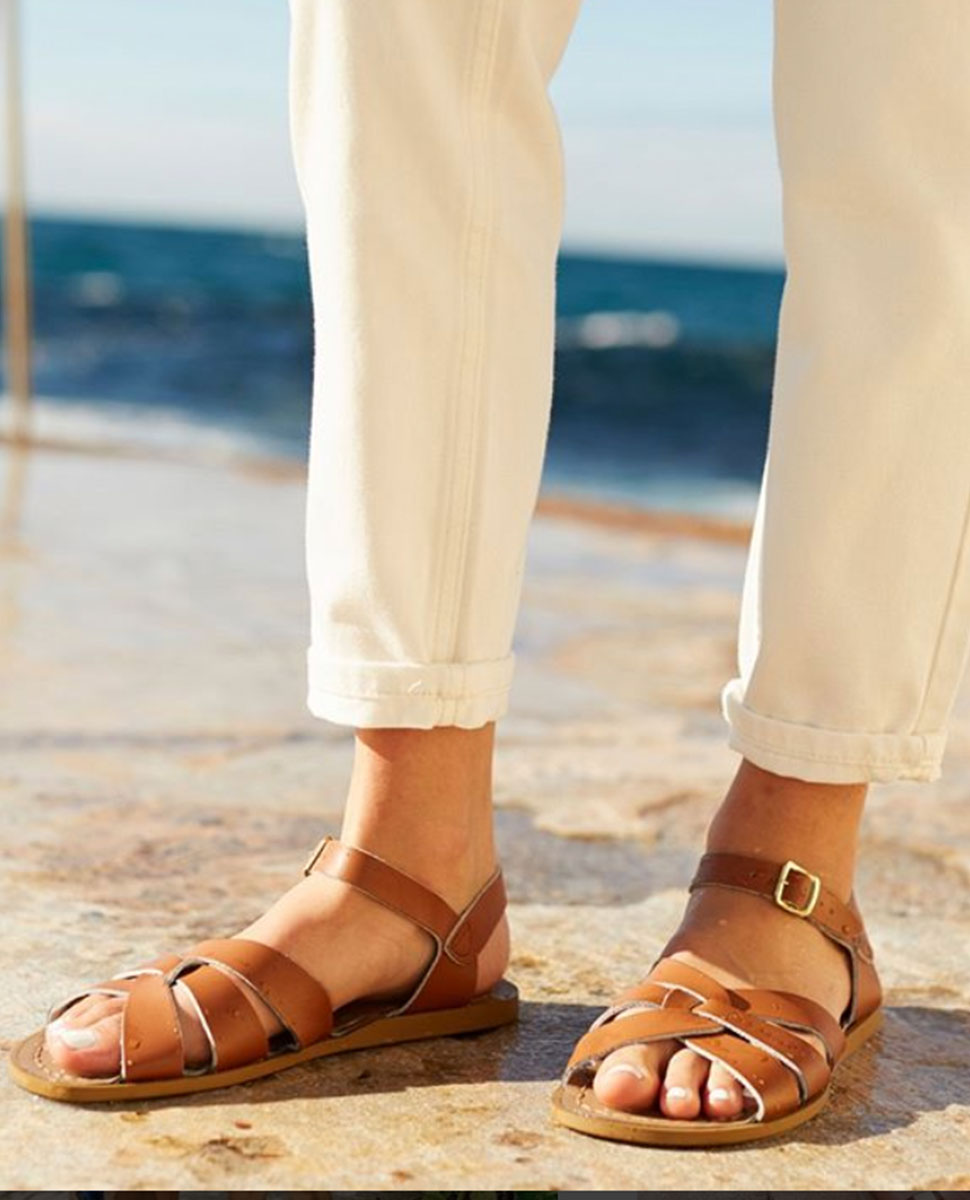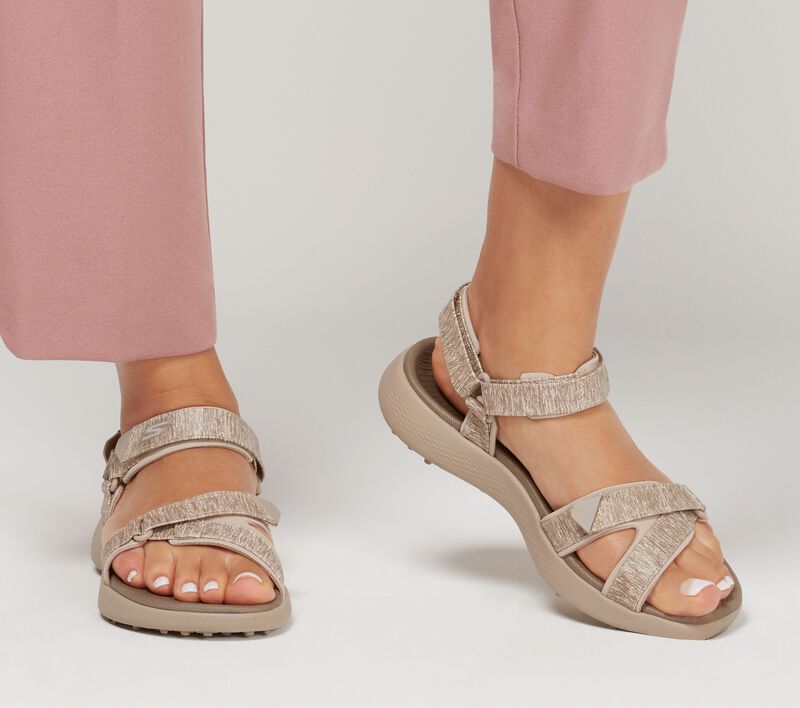Discover Women’s Sandals
Women’s sandals are an essential part of any wardrobe. They are versatile, stylish, and comfortable. Let’s explore the world of women’s sandals and find the perfect pair for you.
Exploration of Ancient Civilizations and Their Earliest Forms of Women’s Sandals
Transformation Through Historical Periods
Ancient women’s sandals have evolved significantly. The first forms appeared in ancient Egypt. Crafted from papyrus, they were simple yet elegant. The Greeks added more sophistication. They used leather and decorated them with intricate patterns. In Rome, women’s sandals became symbols of status. They used gemstones and precious metals.
The Middle Ages saw a decline in elaborate designs. Simplicity was key during this time. However, in the Renaissance period, fashion revived once more. Sandals became more ornate and detailed. Essentially, each era brought its own unique changes.
The Cultural Significance
Women’s sandals were not just about protection. In many civilizations, they held deep cultural meanings. In Egypt, they signified social status. Only the wealthy could afford certain materials. Meanwhile, in Greece, they represented beauty and femininity. Sandals were often gifts from suitors to women.
In Rome, the style of sandals could indicate citizenship. Only Roman citizens could wear certain designs and colors. In medieval Europe, closed shoes were more common. However, sandals were still worn in hotter climates. They symbolized practicality and comfort.
Materials and Craftsmanship
Different materials were used through these periods. Egyptians preferred papyrus and palm leaves. Greeks opted for leather, while Romans favored more luxurious materials. Their sandals often featured decorative elements like gemstones. In the Middle Ages, materials became simpler and less adorned. By the Renaissance, elaborate craftsmanship returned.
Craftsmanship also evolved. Early designs were rudimentary but functional. Over time, techniques became more advanced. The Greeks were known for their skilled leather work. Romans pushed the boundaries with added luxury and detail. Each period demonstrated progress in both style and construction.
Women’s sandals have a rich history of transformation. Each historical period brought its own changes. The cultural significance varied across civilizations. Materials and craftsmanship evolved over time. Today’s women’s sandals reflect this rich heritage. They are a blend of ancient customs and modern sensibilities. This journey showcases not just fashion, but also human ingenuity.

Scientific Insights into Women’s Sandals: Design and Ergonomics
The Anatomy of a Sandal
Women’s sandals consist of several key parts. These include the sole, the insole, the straps, and the fastening mechanisms. The sole is the bottom part that touches the ground. It is usually made of rubber, foam, or leather. In contrast, the insole is the part that your foot rests on. This can include cushioning materials like memory foam for added comfort.
Straps help secure the sandal to your foot. They come in different designs and materials, such as leather, synthetic fibers, or fabric. Lastly, fastening mechanisms like buckles, Velcro, or elastic bands ensure a snug fit. Proper fit is crucial for comfort and stability.
Materials Used in Women’s Sandals
The choice of materials affects the sandal’s comfort and durability. Leather is popular for its breathability and durability. However, it can be expensive. Synthetic materials like polyurethane offer a cost-effective and versatile alternative. They can mimic leather’s look and feel while being often less expensive.
Eco-friendly options, such as recycled materials, are also gaining popularity. These are both sustainable and stylish. Transparent PVC and fabric straps add variety to the designs. Each material has unique benefits that cater to different needs and preferences.
Comfort Considerations in Design
Designing women’s sandals for comfort involves many elements. Cushioning helps reduce foot fatigue. Memory foam insoles conform to the shape of your foot. This provides personalized comfort and support. Arch support is essential to maintain foot health. Poor arch support can lead to pain and discomfort.
Breathability is another crucial factor. Materials like mesh and perforated leather allow air circulation. This keeps feet cool and dry, preventing sweat buildup. Proper ventilation also prevents odor and bacterial growth.
Support and Stability
Support elements in women’s sandals contribute to overall foot health. A good sandal should have a firm yet flexible sole. This allows natural foot movement while providing stability. Heel cups and arch supports distribute weight evenly across the foot. This reduces strain on specific areas and improves comfort.
Outsoles with good grip patterns prevent slipping. This adds to both the safety and stability of the sandals. It’s essential for those who walk on various terrains. Adjustable straps ensure the sandals stay securely on your feet, providing additional support.
Posture Considerations
Good posture starts from the feet up. Women’s sandals should enhance, not hinder, your posture. High heels can shift your center of gravity. This leads to poor alignment and back pain. Therefore, choosing sandals with a moderate heel height is essential.
Ergonomic designs focus on keeping your feet in a neutral position. This alignment helps maintain correct posture. Proper arch support reduces pronation or supination, which can lead to posture problems. Therefore, investing in ergonomically designed sandals can improve your overall posture.
In conclusion, women’s sandals are not just about style. The right design and materials can offer comfort, support, and promote good posture. Understanding the anatomy, materials, and ergonomic principles can help you choose the best pair for your needs. Always consider comfort, support, and posture when selecting your next pair of sandals.

Choosing the Right Women’s Sandals for Health and Comfort
Importance of Supportive Sandals
Choosing the right women’s sandals is vital for foot health. Supportive sandals can prevent foot problems. They can help you avoid issues like plantar fasciitis and arch pain. Always prioritize sandals with good arch support. It keeps your feet healthy and comfortable.
Ensuring a Proper Fit
Finding the right fit is crucial. Ill-fitting sandals can cause blisters and discomfort. Try sandals on at the end of the day. Our feet are slightly larger then. If a sandal pinches, it’s not the right fit. Your toes should not hang over the edges.
Checking the Materials
The materials of your sandals matter. Leather and suede are breathable and durable. Avoid cheap plastic materials. They can cause sweating and irritation. Look for moisture-wicking linings. These keep your feet dry and comfortable.
Cushioning for Comfort
Good cushioning is essential. Cushioning absorbs shock and reduces foot stress. Check for sandals with padded footbeds. Memory foam can be a great option. This provides custom support to your feet. It feels soft and comforting.
Consideration for Foot Shape
Everyone’s feet are different. Choose sandals that match your foot shape. Wide feet need wider sandals. High-arched feet need more arch support. Try different brands. Find the one that suits you best.
Adjustable Straps
Adjustable straps offer a better fit. Velcro or buckles can help. Adjust the straps to your comfort level. This prevents slipping. It also ensures your sandals stay secure.
Sole and Heel Design
The sole design impacts comfort. Look for non-slip soles. They provide better traction. Avoid very flat sandals. A slight heel or wedge is often more comfortable. It supports natural foot posture.
Regular Foot Measurements
Our foot size can change over time. Measure your feet regularly. Know your exact size before buying. This reduces the chance of buying the wrong size.
Choosing the right women’s sandals involves support, fit, and materials. Prioritize these factors for healthier feet. Your feet will thank you for the comfort and care. Enjoy your stylish, comfortable sandals!

Environmental Impact of Women’s Sandals: Sustainability and Innovation
Introduction to Environmental Concerns
The production of women’s sandals often impacts the environment. Many manufacturers use synthetic materials. These materials, like plastic, take centuries to decompose. Factories producing these sandals might release pollutants into the air and water. Additionally, the use of dyes can harm local ecosystems. This is a significant concern.
Raw Material Extraction
The extraction of raw materials also raises concerns. Leather, a common material, requires large amounts of land and water. Raising livestock for leather can lead to deforestation. Moreover, processing leather involves harmful chemicals. These chemicals often end up in rivers and soil, polluting them.
Manufacturing Process
The manufacturing process consumes a lot of energy. Factories use fossil fuels, contributing to carbon emissions. This energy-intensive process also leads to large carbon footprints. Waste from factories, including scrap materials, ends up in landfills. This increases the volume of non-biodegradable waste.
Ending the Product’s Life Cycle
Disposing of sandals presents another challenge. Many sandals are not recyclable. When discarded, they contribute to landfills. Also, incinerating them releases toxic fumes. Hence, finding sustainable disposal methods is essential.
Innovative Materials
Innovative materials offer a more sustainable solution. Many brands now use natural fibers like hemp and cotton. These materials are biodegradable. Some companies are also experimenting with recycled materials. For instance, they use recycled rubber for soles.
Eco-friendly Manufacturing Techniques
Eco-friendly manufacturing techniques are gaining traction. Some factories now run on renewable energy. Solar panels and wind turbines are popular choices. Additionally, eco-friendly dyes minimize water pollution. These methods reduce the overall environmental footprint.
Ethical Labor Practices
Sustainability also includes ethical labor practices. Hiring local artisans can provide steady incomes. It also supports traditional craftsmanship. Brands that focus on fair wages are making a positive impact. Ethical practices can enhance brand reputation as well.
Green Certifications and Labels
Green certifications matter to eco-conscious consumers. Certifications like Fair Trade and Organic certify sustainable practices. These labels help consumers make informed choices. Brands also benefit from the trust these labels convey.
Consumer Choices
Consumers have the power to drive change. Choosing eco-friendly brands can lead to better practices. Reading labels and asking about materials can make a difference. Sustainable brands often offer durability, reducing the need for frequent purchases.
Conclusion
The environmental impact of women’s sandals is significant. From material extraction to disposal, each step has its concerns. But, innovation offers hope. Sustainable materials and eco-friendly techniques can make a change. Ethical practices and green certifications further aid this movement. Finally, conscious consumer choices drive the shift towards sustainability.
By focusing on these areas, the industry can reduce its footprint. We can all enjoy fashion that doesn’t harm the planet. Sustainable women’s sandals are a step in the right direction.

Conlusion
Women’s sandals are more than just footwear. They embody history, culture, and fashion. Their significance in society is undeniable. They offer comfort and style. The appeal of women’s sandals will certainly endure.


